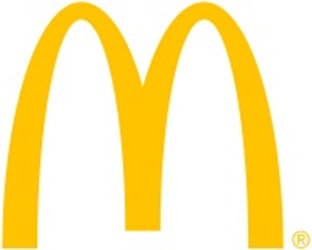Restaurant And Hospitality News – March 13, 2017

By Christine Kern, contributing writer

In news this week, Virginia passes the first robotic delivery services legislation; McDonald’s has planned a full-court press to win back customers; and Domino’s updates its Google Home ordering platform.
Virginia First State To Pass Legislation Governing Robotic Delivery Services
Virginia has become the first state to pass legislation that regulates the use of delivery robots, allowing them to operate on sidewalks and through crosswalks. The new state law will go into effect on July 1. While the new law does not require delivery robots to function within the line of sight of a human operator, it does require the operator to be able to take over in case of an issue with the robot. It also imposes a 10 mph speed limit and a 50 pound weight limit on the delivery robots.
Similar legislation has also been proposed in Florida and Idaho. The Virginia law was proposed by Ron Villanueva and Bill DeSteph, who consulted with Starship Technologies to gather input for the legislation. Starship Technologies began a trial with Postmates and DoorDash to beta test robotic deliveries in Redwood City, California and Washington, D.C., so they have a stake in seeing positive legislation come into play.
There wasn’t push back [from legislators],” Rep. Villanueva said in an interview with Recode. “It was more like intrigue and curiosity about the technology, what the application would be, how it would benefit the citizens.”
Virginia lawmakers received letters of support from Amazon, Grubhub, and other companies, asking them to pass the new robotic delivery law, said Rep. Villanueva. And while Starship had a hand in creating the legislation, the law also opens the doors to other delivery robotics companies and delivery services to operate in Virginia.
McDonald’s Hopes To Recapture Customers With Delivery and Curbside Service
McDonald’s has announced plans to add curbside service, mobile ordering and payment at all 14,000 U.S. restaurants by the end of the year, as well as adding more kiosks and the rapid rollout of delivery services. The plan is to have kiosks in 2,500 locations by year’s end, with rollout to most of its domestic locations by 2020.
The new McDonald’s focuses on digital capabilities, a more efficient kitchen operation, and higher food quality, all as part of the effort to win back customers lost over the past five years. McDonald’s reports some 500 million lost transactions since 2012.
CEO Steve Easterbrook told investors, “Technology is disrupting everything around us. The question for McDonald’s: Do we want to be disrupted, or do we want to be the disruptor?”
The introduction of curbside service would work in conjunction with the mobile app, where diners will be able to order via the app. The geofencing capabilities can then alert the restaurant when the customer arrives. They part in a designated spot and their order will be brought right to their car. The app will also work in the drive-thru and could accelerate drive-thru speed by reducing order times.
McDonald’s is also currently testing delivery in Florida via UberEats, committed to jumping in with both feet. Easterbrook asserted, “We’re not testing; we’re rolling out. We’ll be bringing in major international countries this year, and we’ll be expanding in the U.S.” Easterbrook asserted, “There’s a customer demand that we’re not meeting. It’s truly satisfying a customer-led desire. It’s not like we’re going in as a very early adopter, trying to create a market. The market exists. We’re just not serving it.”
Chief Strategy Officer Lucy Brady said, “in my opinion, it’s the most significant disruption in the restaurant industry in our lifetimes.”
Domino’s Updates Google Home Ordering Platform
Domino’s introduced Google Home in December 2016, a new platform that allows customers to place orders via the Google Assistant, and now it has made the process even easier. The updates to its Google Home ordering mean that any customer can start a new order without a Pizza Profile for any menu item, including a custom-built pizza. Domino’s is the first to offer voice assistance ordering with this level of customization, according to the company.
"We're proud to once again be the first in our industry, even among the first in e-commerce, to offer ordering via the Google Assistant," said Dennis Maloney, Domino's senior vice president – chief digital officer. "We've had a busy year launching platforms that have kept us in the forefront of digital ordering and customer convenience. This is yet another way we are making it easier for our customers to order Domino's pizza from anywhere they turn. "To place an order, customers say to the Google Assistant, “OK Google, talk to Domino’s”. Dom, the chain’s voice ordering assistant, then guides the customer through the ordering process.
"The Google Assistant on Google Home is the second full-ordering platform to launch on Domino's lineup of AnyWare ordering capabilities this year," said Dennis Maloney, Domino's senior vice president – chief digital officer. "Our in-house technology team has created a simple and convenient ordering experience that is now open to everyone, not just those who have a saved account."
